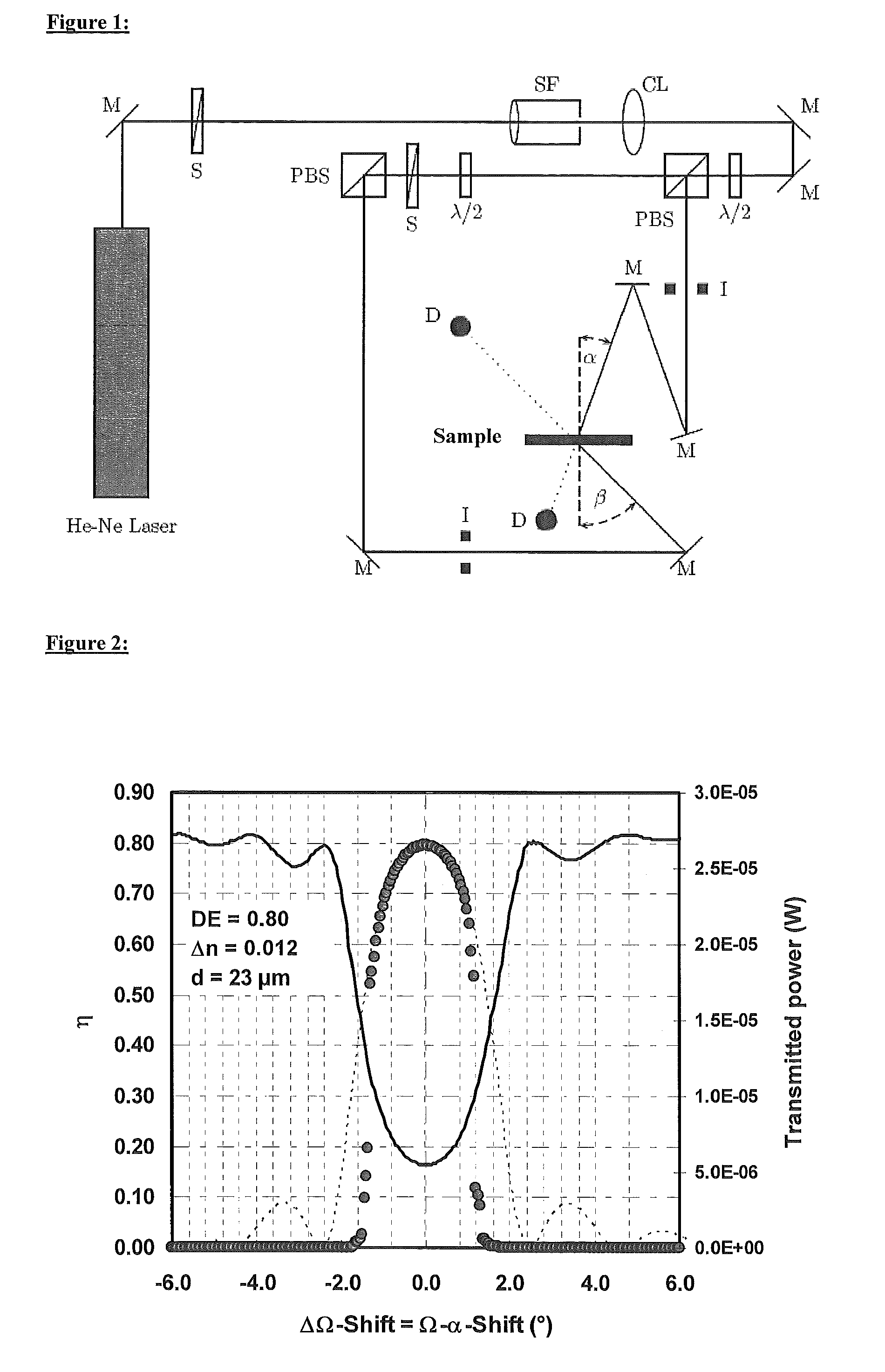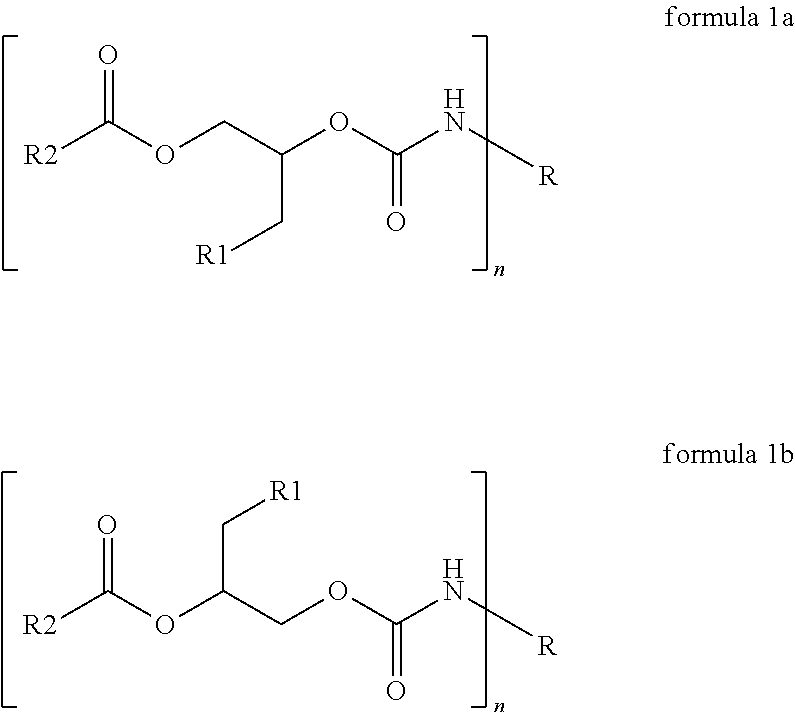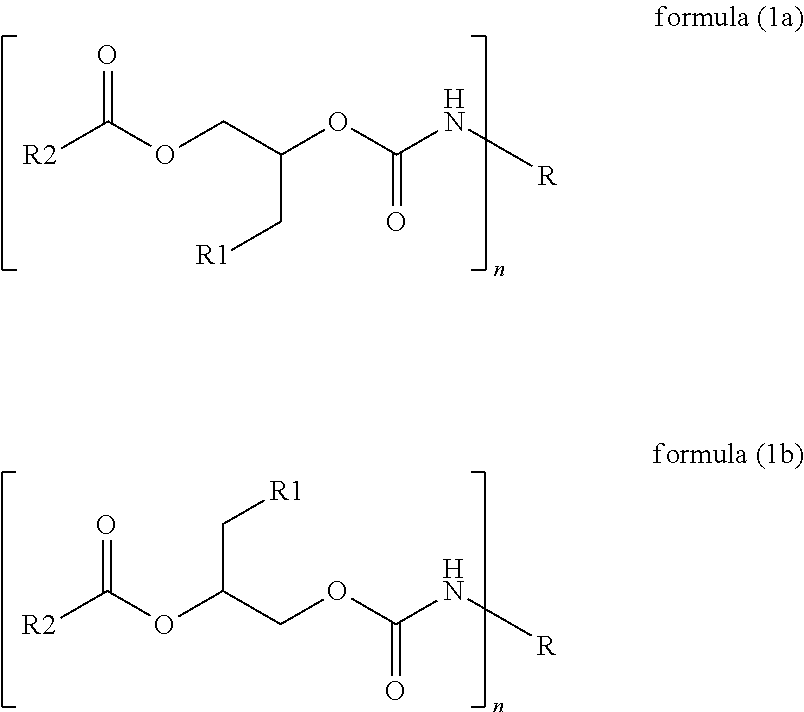Holographic media and photopolymers
a technology of photopolymer and holographic media, applied in the field of holographic media, can solve the problems of increasing the cost of industrial processes, requiring chemical developer solutions, and wet chemical processes,
- Summary
- Abstract
- Description
- Claims
- Application Information
AI Technical Summary
Benefits of technology
Problems solved by technology
Method used
Image
Examples
example 1
[0132]156.5 g of dibromophenyl glycidyl ether (Denacol EX147, obtainable from Nagase ChemTex, Japan), 36 g of acrylic acid, 0.0019 g of 2,6-di-tert-butyl-4-methylphenol and 0.328 of triphenylphosphine were initially introduced into a three-necked flask having a reflux condenser and stirrer. In addition, air was slowly passed through and heating to 90 C was effected. Stirring was effected for 60 h. A clear, liquid product that, according to 1-H-NMR, no longer contained epoxide was obtained.
example 1a
[0133]30.8 g of the product from Example 1 and 6.96 g of 2,4-toluidene diisocyanate (Desmodur T100, Bayer MaterialScience AG, Leverkusen, Germany) were initially introduced into a three-necked flask having a reflux condenser and stirrer. In addition, air was slowly passed through and heating to 60 C was effected. After the initial exothermicity to 80 C, the product was stirred for 80 minutes at 60 C. A clear glassy product having NCO=0% was obtained.
examples 1b-1d
[0134]The following examples were carried out analogously to Example 1a. Details in this respect are to be found in Table 1
[0135]
TABLE 1Raw material 1Product ofRaw material 2ReactionExampleExample 1IsocyanateRaw material 3timeProduct1b26.95 g 5.88 g HDI—17 hClear, tacky mass1c26.95 g 7.35 g TMDI—17 hClear, tacky mass1d19.11 g 4.19 g TIN0.01 g KB17 hClear glass sintering at roomtemperature1e26.95 g40.81 g RFE2 drops of18 h + 4 hEthyl acetate is distilled off,DBTL afterthen clear, highly viscose,18 htacky product1f26.95 g 9.17 g W—20 hClear glass sintering at roomtemperature1g26.95 g 7.77 g IPDI—20 hA clear, tacky sintering glass1h26.95 g 8.75 g M44—20 hClear, tacky sintering glass1i23.10 g10.63 g XP2410—20.5 h Clear glass sintering at roomtemperatureTDI: 2,4-Toluidene diisocyanate (Desmodur T100, Bayer MaterialScience AG, Leverkusen, Germany)HDI: 2,6-Hexamethylene diisocyanate (Desmodur H, Bayer MaterialScience AG, Leverkusen, Germany)TMDI: 2,4,4-Trimethyl-1,6-hexamethylene diisocya...
PUM
| Property | Measurement | Unit |
|---|---|---|
| refractive index | aaaaa | aaaaa |
| refractive index | aaaaa | aaaaa |
| molar ratio | aaaaa | aaaaa |
Abstract
Description
Claims
Application Information
 Login to View More
Login to View More - R&D
- Intellectual Property
- Life Sciences
- Materials
- Tech Scout
- Unparalleled Data Quality
- Higher Quality Content
- 60% Fewer Hallucinations
Browse by: Latest US Patents, China's latest patents, Technical Efficacy Thesaurus, Application Domain, Technology Topic, Popular Technical Reports.
© 2025 PatSnap. All rights reserved.Legal|Privacy policy|Modern Slavery Act Transparency Statement|Sitemap|About US| Contact US: help@patsnap.com



